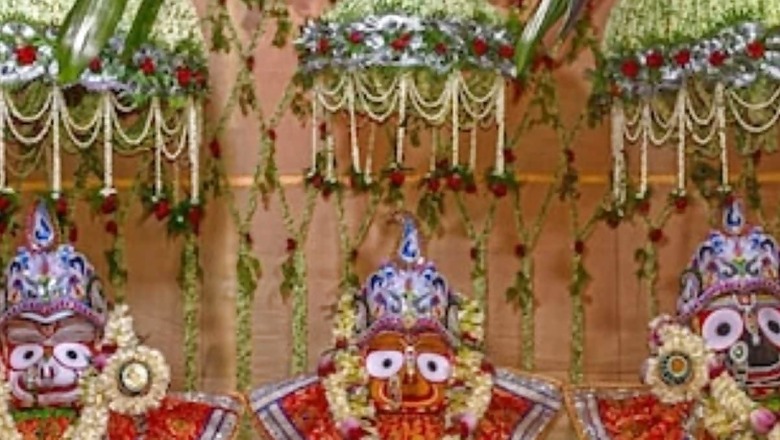
views
The annual Rath Yatra festival in Puri, Odisha, attracts millions of devotees and visitors from around the globe. As one of the largest Hindu religious gatherings, this nine-day event celebrates the yearly journey of Lord Jagannath, Lord Balabhadra, and Goddess Subhadra to their birthplace.
We discuss the historical significance of the centuries-old Jagannath Rath Yatra and its relevance in today’s world with Gauranga Das Prabhu, Director, ISKCON’s Govardhan Ecovillage. Highlighting the festival’s role in promoting unity, inclusivity, and spiritual enrichment, he explains how the teachings and practices of Rath Yatra can inspire personal growth, social cohesion, and global cultural understanding amidst modern societal challenges.
1. Rath Yatra has been celebrated for centuries. Can you highlight its historical significance? Also, what lessons from it can be relevant in today’s modern world?
This festival represents the yearly journey of Lord Jagannath, his elder brother Baladeva, and their sister Subhadra to their garden palace at the start of the monsoon. Its origins come from the ancient legend of Lord Krishna being brought back to Vrindavan from Kurukshetra by the residents of Vrindavan. The festival is known by various names such as the Rath Yatra, Car Festival, or Festival of Chariots. It is one of the oldest and most significant religious festivals in India, especially in Puri, Odisha. During the festival, the three deities are taken out on chariots from the Jagannath Temple to the Gundicha Temple.
At present, when the world is filled with individualism and digital interactions, Rath Yatra brings people together. Rising above the social, cultural, and economic barriers, everyone participates in pulling the chariots and engaging in festivities. It also encourages meaningful traditions and reminds us to get away from the daily hustle and find solace in cultural and spiritual practices.
2. In an era where social divisions seem to increase, what lessons can we learn from this Yatra?
While devotees go to a temple to meet their deities, this is a festival wherein the deities leave their sanctum to meet their devotees. This symbolizes that coming out of one’s comfort zone, and engaging with and serving others can promote social cohesion and empathy. Also, this festival is a perfect example of inclusivity and unity where people from diverse backgrounds come together to celebrate. It teaches the lesson that despite differences, collective participation can promote harmony and understanding.
3. How can individuals incorporate the essence of this journey into their personal growth, transformation, and self-discovery?
The Yatra of the deities can be seen as a metaphor for personal journeys. It can inspire people to walk their own paths of growth by introspection and learning. In a time when everyone around us is caught up in the hustle and bustle, this journey reminds us to look into ourselves. By emphasizing the joy found in spiritual enrichment and beauty of simplicity one can find inner peace and contentment over material possessions, leading to a more fulfilling life.
4. What insights from Rath Yatra can help people find contentment and happiness through simplicity and spiritual enrichment rather than material possessions?
From minimalism to spirituality the Yatra gives us many insights. It encourages focusing on spiritual practices and finding joy in devotion. This can inspire people to adopt a minimalist lifestyle, reducing the clutter of material possessions and finding happiness in less.
The preparation and execution of Rath Yatra involve the cooperative efforts of thousands of devotees, all working together towards a common goal. This unity promotes a sense of belonging and shared purpose, which teaches us about how collective efforts and cooperation can simplify life. When people come together, and pool their resources & efforts, tasks become easier, and a sense of well-being is achieved.
5. As globalization has brought diverse cultures closer, how can the teachings and practices of Rath Yatra help preserve cultural heritage while promoting global understanding and respect?
The Rath Yatra, celebrated in Puri depicts how traditional practices can be preserved and promoted globally. The Yatra is a cultural heritage while adapting to new contexts and audiences. As people around the world come to India to celebrate this, it has promoted global understanding and respect for diverse traditions. This has further enhanced global cooperation and mutual appreciation which are incredibly relevant to today’s modern world.




















Comments
0 comment